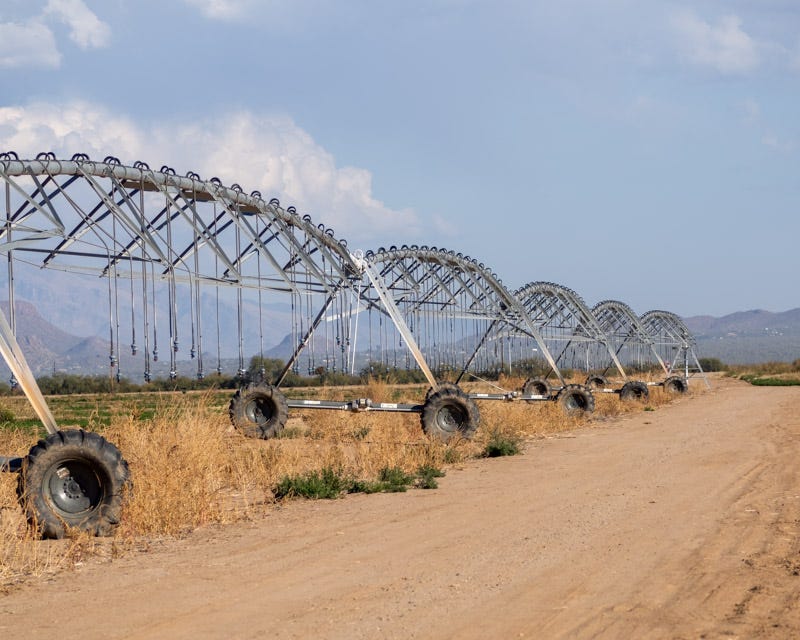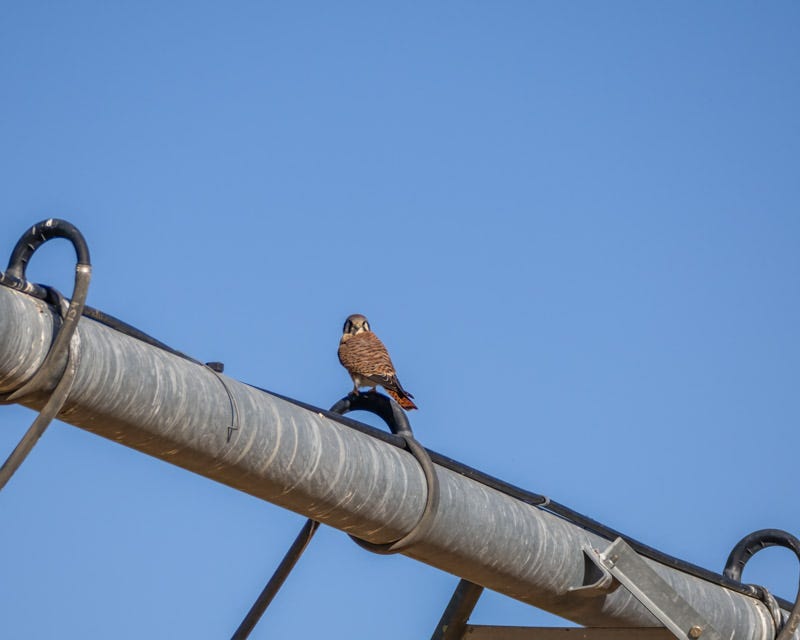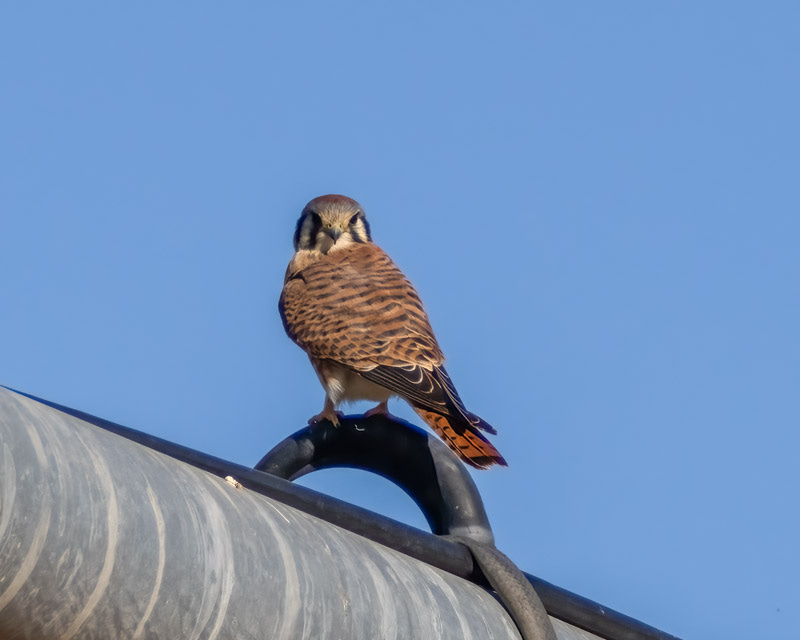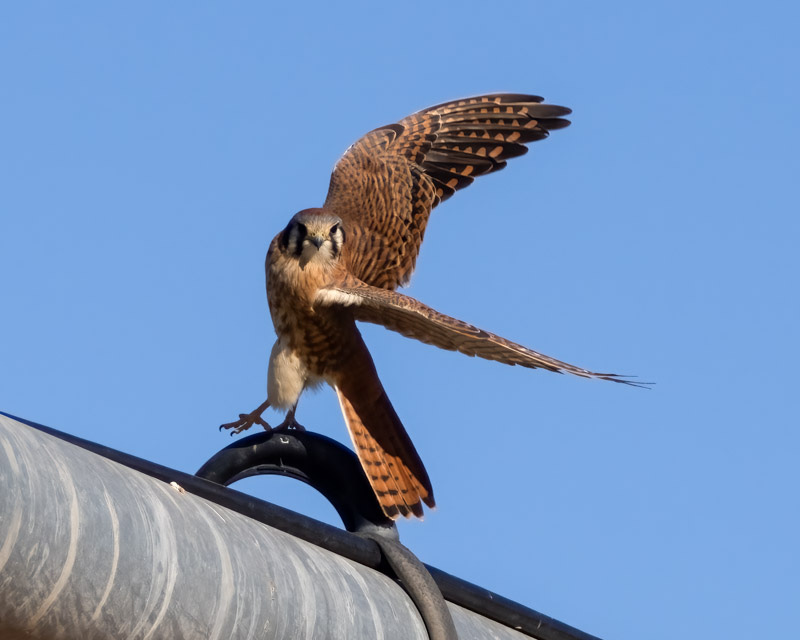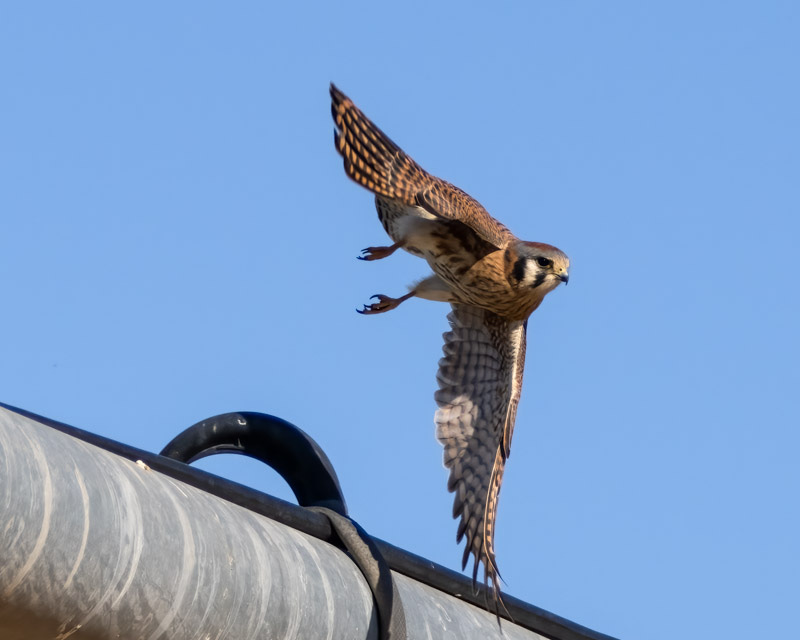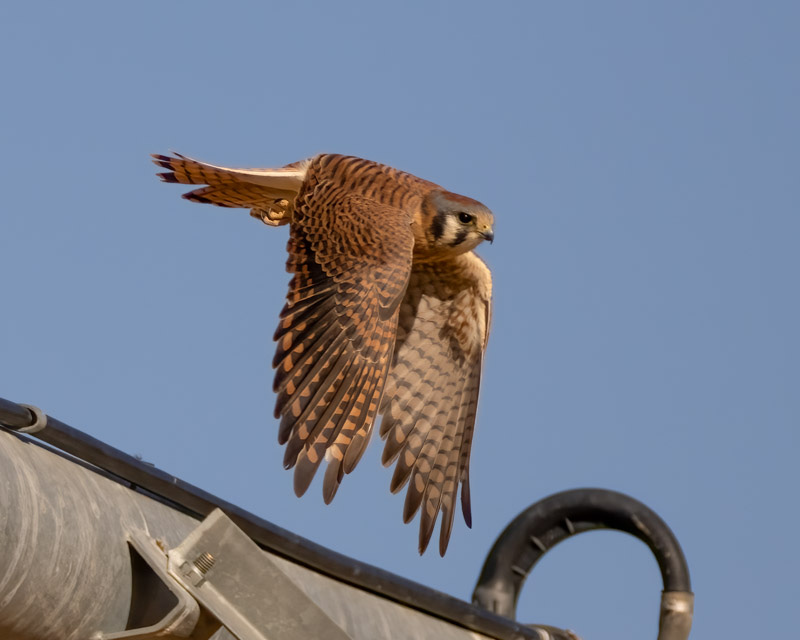Perch Spot on a CPI
What is a CPI?
What's a CPI you ask? CPI is a Center Pivot Irrigation system that some farms use. It is a crop irrigation system that uses sprinklers to water crops while the equipment rotates around a fixed pivot point. CPI systems are popular because they use less water and labor than other irrigation systems. A single unit can often be as long as a half mile.
As the photo above shows, on an extensive flat farm, there are very few perches, if any, for birds of prey to hunt from. The CPI arches offer a great spot for birds to perch on with a line of sight extending across many fields. On a farm in Marana, a female American Kestrel surveyed her territory from the top of a CPI unit.
A close-up shows the female Kestrel's rusty back and wings with black barring on them. Her tail is more reddish than her back and wing color. She was alert and although we never got out of our truck, she paid close attention to us.
While maintaining direct attention to us, she decided to take off. Her entire body is twisted and extended as she takes flight. She can do this while never losing sight of us. (Notice how the end of her tail is relatively square-tipped.)
As she heads towards the sun, the Kestrel continues to eye us. As a falcon, American Kestrels have long, pointed wings. American Kestrels, both male and female, have a pair of black slashes on the sides of their pale faces. This feature is called a 'mustache' or a 'sideburn'.
The Kestrel seems to be flying smoothly now. Kestrels fly with wings that often look bent. Her feet are still dangling but she will quickly pull them back up and tuck them into her tail feathers. Because of how she is keeping us in her sight, this didn't seem like a hunting flight. She was not looking at any prospective prey at this point.
The Kestrel was angling towards the ground but continued to pass over the next arch of the CPI unit. American Kestrels are North America's smallest falcon. They are fierce hunters who eat mostly insects and other invertebrates. They may also hunt small rodents and birds.
The Kestrel swung low to the ground, making a hunting pass but then returned to the irrigation system several dozen yards ahead of us. She perched and remained aware of the truck driving slowly in her direction.
As we approached she leaned forward, ready to take off once more. She continued to play tag with us, flying ahead as we drove and landing on the irrigation equipment over and over again. At last, she took off towards the north, flying well across several fields.
We continued to drive slowly around the farm. At one point, we were rewarded by a large cloud that, to me, looked like a "cumulus" hawk. Can you see the bird's head and wings? I'm pretty certain that's what it was!


